Algae Extract
Algae Extracts (Astaxanthin) soothe and moisturize the skin. Algae is rich in minerals that help the skin, containing antioxidants that are 25 times stronger than Vitamin E. Algae extracts are used to add vital oligo-elements and increase surface hydration.

Allantoin
Allantoin is a botanical extract found in the comfrey root. A superb anti-irritant, allantoin is soothing and non-allergenic. Allantoin is also known skin softener, easing damaged tissue where applied.

Aloe Leaf Juice
Aloe leaf (Aloe barbadensis) has strong soothing properties and works to bind moisture to the skin.

Beta-sitosterol
Beta-sitosterol is a phytosterol (plant sterol) that occurs naturally in many plants from black cumin seed (nigella) to wolfberries. The chemical structure of beta-sitosterol is similar to cholesterol. Beta-sitosterol may have a positive effect on male hair appearance when used in combination with saw palmetto.
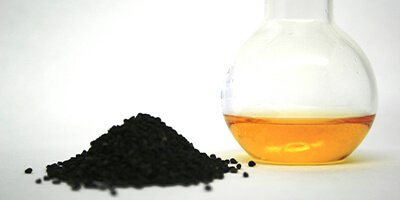
Calendula
Calendula (pot marigold) is a genus of about 12-20 species of annual or perennial herbaceous plants in the daisy family Asteraceae, native to the area from Macaronesia east through the Mediterranean region to Iran. The common name marigold probably refers to the Virgin Mary, or its old Saxon name 'ymbglidegold', which means 'it turns with the sun'. Marigolds typically bloom quickly (in under two months) in bright yellows, reds, and oranges throughout the summer and well into the fall. Marigolds have a spicy aroma and are produced from spring to autumn in temperate climates. Marigold petals are considered edible.

Camphor
Camphor is obtained from the wood of a tree common to Southeast Asia, Cinnamomum camphora. When applied to the skin camphor produces a cooling effect similar to menthol leaves.

Cellulose
Cellulose is the structural component of the primary cell wall of green plants, many forms of algae and the oomycetes. Cellulose is the most common organic compound on Earth. About 33 percent of all plant matter is cellulose. Cellulose is obtained from cotton and used as a thickening and binding agent in our products.

Cetrimonium Chloride
Cetrimonium chloride is an ammonium salts used in shampoos and conditioners to reduce or inhibit the buildup of static electricity. Cetrimonium chloride carries a positive charge that attracts negatively charged skin and hair proteins. Cetrimonium chloride also helps to reduces odor by helping water to mix with oil and dirt so that they can be rinsed away. The safety of Cetrimonium Chloride was assessed by the Cosmetic Ingredient Review (CIR) Expert Panel. The CIR Expert Panel evaluated the scientific data and concluded that centriumonium chloride was safe for use in rinse-off products and was safe for use at concentrations of up to 0.25% in leave-on products.

Cetyl Alcohol
Cetyl alcohol is derived from coconut oil and used as an emollient, emulsifier, and thickening agent.
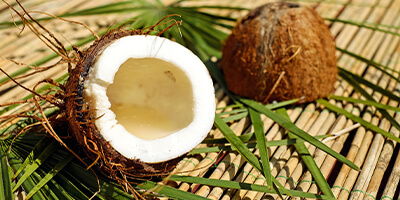
Chamomile
Chamomile plants include matricaria recutita, chamomilla recutita, and matricaria chamomilla. The main constituents of the flowers include phenolic compounds, primarily the flavonoids apigenin, quercetin, patuletin, luteolin, and their glucosides. The principal components of the essential oil extracted from the flowers are the terpenoids α-bisabolol and its oxides and azulenes, including chamazulene.

Citric Acid
Citric acid is used to adjust the acidity of products. Derived from citrus fruits.

Cocamidopropyl Betaine
Cocamidopropyl betaine is a derivate of cocamide and glycine betaine (a form of betaine). Cocamidopropyl betaine is a very gentle medium strength surfactant. Cocamidopropyl betaine also works as an emulsifier and thickener and as an antistatic agent. Cocamidopropyl betaine is the active ingredient in Johnson & Johnson's Baby wash.
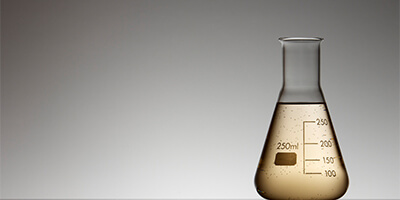
DMAE
Dimethylaminoethanol, also known as DMAE or dimethylethanolamine, is an organic compound with strong properties. DMAE is found naturally in fish and also exists in the human nerve tissue. As we age, our levels of acetylcholine decrease, and this decline is associated with sagging skin.
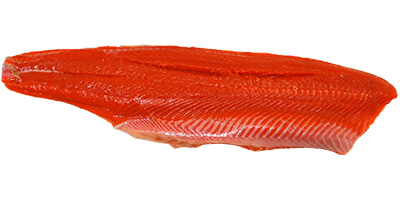
Emu Oil
While lipid replenishment methods are still being developed by dermatological scientists, emu oil is already a very good natural oil for lipid replenishment. It comes from a small, ostrich-like bird. The emu (Doromiceius novae-hollandiae) is the world's second largest bird, only second to the ostrich. An adult bird stands 5 feet tall, weighs 120 pounds, and can run 30 miles an hour. The species may have existed for 80 million years, and survived when the dinosaurs perished 65 million years ago.
Australian aborigines discovered the benefits of Emu Oil many thousands of years ago and used its helpful properties on skin.
The fatty acid composition of human skin oil and Emu Oil are very similar. In both oils, mono-unsaturated oleic acid is the most prevalent, then palmitic acid, followed by the essential fatty acid, linoleic acid. This may be the reason for the positive actions of Emu Oil on human skin.
While scientific studies on Emu Oil are just beginning, Emu Oil has been traditionally used for centuries by the native Aborigines of Australia.
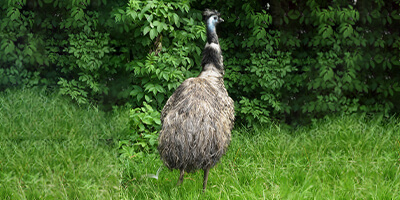
Ethylhexyl Palmitate
Ethylhexyl palmitate, or octyl palmitate, is the ester of 2-ethylhexanol and palmitic acid. Palmitic acid is one of the most common saturated fatty acids found in animals and plants. As its name indicates, it is a major component of the oil from palm trees (palm oil and palm kernel oil). The word palmitic is from the French "palmitique", the pith of the palm tree. Ethylhexyl palmitate is used as an emollient and thickening agent.

GHK-Copper
A human copper peptide complex - GHK-Cu (glycyl-l-histidyl-l-lysine:copper(II)). The tripeptide, GHK, was discovered by Dr. Pickart. Its high affinity for copper(II) allows it to obtain copper from carrier molecules such as albumin and form GHK-Cu, and transport copper to cells.

Glycerin
Glycerol, glycerin or glycerine is a sugar alcohol and the central component of many lipids. Glycerin is obtained from the fermentation of sugars. Glycerin improves skin moisture levels by attracting water to the skin. Glycerin also strengthens the work of other skin lipids.

Glycine
Glycine is the smallest of 20 amino acids commonly found in proteins. Glycine makes up about 35% of collagen. The glycine in our products acts as a water-binding agent, though it also has antioxidant properties.
High-protein foods, such as fish, meat, beans, milk, and cheese, are the best dietary sources of glycine.
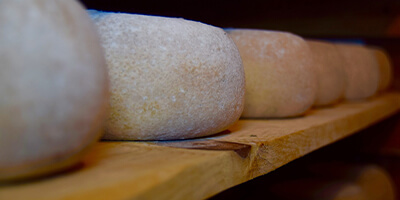
Golden Seal Root
Golden seal root (Orange-root, Orangeroot; Hydrastis canadensis) is a perennial herb in the buttercup family Ranunculaceae, native to southeastern Canada and the northeastern United States. It may be distinguished by its thick, yellow knotted rootstock. The stem is purplish and hairy above ground and yellow below ground where it connects to the yellow rhizome. The plant bears 2 palmate, hairy leaves with 5-7 double-toothed lobes and single, small, inconspicuous flowers with greenish white stamens in the late spring. It bears a single berry like a large raspberry with 10-30 seeds in the summer.
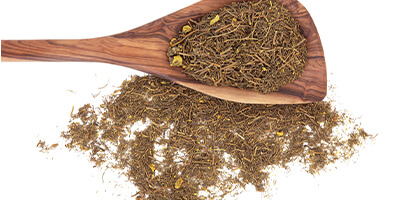
Grapefruit Oil
Grapefruits originated in 17th century Barbados as an accidental cross between a sweet orange and a pomelo. Grapefruit was originally known as the forbidden fruit. Most production of grapefruit occurs in China, followed by Vietnam, the United States and Mexico. Grapefruit trees can grow up to 20 feet high and reach maturity.

Green Tea Extract
Tea extract (camellia sinesis) has strong anti-oxidant properties, when applied to the skin.
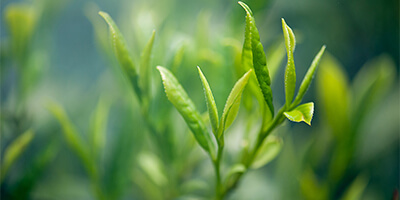
Guar Hydropropyltrimonium Choride
Guar hydroxypropyltrimonium chloride is derived from guar gum, a green bean. Guar hydroxypropyltrimonium chloride is used for its conditioning properties in shampoos and conditioners. The cationic charge of the guar has been shown to improve the ease of combing.

Henna
Henna is a flowering plant native to tropical and subtropical regions of Africa, southern Asia, and northern Australasia. Extracts of henna are used in shampoos to bring out natural highlights and add luster.

Hops
Hops are the female flower cones of the hop plant (Humulus lupulus). The hop plant is a vigorous climbing herbaceous perennial, usually grown up strings in a field called a hopfield, hop garden or hop yard.

Horsetail
Horsetail is a vascular plant that reproduces by spores rather than seeds. It is found in sandy soils and is cooked and eaten in Japan.
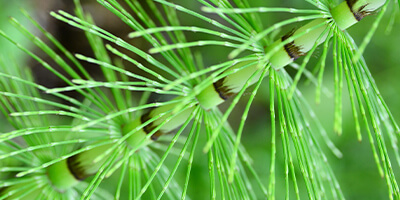
Hydrolyzed Soy Protein
Hydrolyzed soy protein (glycine soja) is derived from soybeans and broken down by water to form a complex with copper to produce copper peptides. GMO-free. The soy proteins used in making our products are not genetically modified.
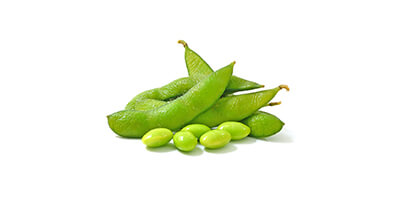
Lactic Acid
Lactic acid is an alpha hydroxy acid extracted from milk. It is one of the best alpha hydroxy acids to use since it is quite gentle on human skin.

Lauramide MEA
Lauramide MEA is a surfactant. Surfactants are designed to make lots of bubbles and clean the hair. Surfactants degrease and emulsify oils and fats and suspend soil, allowing them to be washed away. Surfactants are used in most forms of cleansers, and many of them are considered gentle and effective for most skin types.

Lavender Oil
Lavender oil (lavandula officinalis) has been used as a fragrance and a folk medicine since the beginning of recorded history. The botanical name Lavendula derives from the latin, lavare, meaning "to wash". Lavender is part of the Labiatae family, comprised of aromatic herbs such as thyme, savory, oregano, peppermint, and sage. The plant has blue-green leaves and bright blue blossoms. Both the leaves and flowers are fragrant. One hundred and fifty pounds of lavender flowers produce one pound of essential oil that is aged for one year before it is released. Lavender has light, floral scent with woody undertones. The oil of lavender also has soothing effects on the skin. Lavender oil was used in ancient Persia, Greece and Rome to clean hospitals and sick rooms. Roman soldiers carried lavender oil in first-aid kits on their campaigns. The aroma of lavender oil was thought to be cleansing and soothing for the spirit.

Leucine
Leucine is an essential amino acid. On the outermost layer of the skin, called the stratum corneum, leucine helps keep the skin moisturized as a natural moisturizing factor (NMF). Natural moisturizing factors absorb water from the atmosphere and use it to keep the skin hydrated in dry conditions. Because natural moisturizing factors like leucine are water soluble, repeated contact with water will leach these factors from the skin, making the skin drier until the factors can be replaced. Leucine is not synthesized in the body and is often obtained through diet in foods like peanuts, lentils and chickpeas.
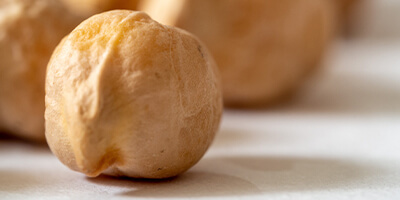
Lutein (Xanthophyll)
Lutein (from Latin lutea meaning "yellow") is one of over 600 known naturally occurring carotenoids. Found in green leafy vegetables such as spinach and kale, lutein is employed by organisms as an antioxidant and for blue light absorption. Lutein has shown strong antioxidant activity. Lutein is also used as a skin conditioning agent in our products.
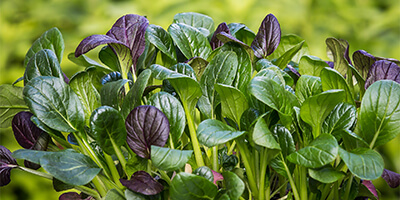
Menthol
Menthol is derived from peppermint and has a cooling and soothing effect on skin.

Myristyl Ether Propionate
PPG-2 Myristyl Ether Propionate is non-oily, nearly dry emollient. It improves spreading and reduces the greasy feel of mineral oil. PPG-2 myristyl ether propionate is a mixture of glycols and fatty alcohols.

Nutmeg Oil
Nutmeg (myristica fragrans) is a spice from the seed of the myristica fragrans, a tropical, dioecious evergreen tree native to the Moluccas or Spice Islands of Indonesia. Nutmeg is said to have a subtle aphrodisiac effect in smaller doses, and has been used as such by Hindus, Arabs, Greeks and Romans. In the Orient, it was especially highly prized among women. The compound that may be responsible for the aphrodisiac effects of nutmeg is myristicin, 4-methoxy-6-(2-propenyl)-1,3-benzodixole. The ancient Romans used nutmeg as a form of currency. In the 13th century, nutmeg was used for its beneficial qualities.
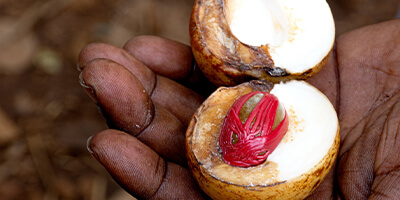
Olive Oil
Olive oil, what Homer called “liquid gold”, works as an emollient in our skin creams. Olive oil is an antioxidant and improves skin moisture

Panthenol
Panthenol is a non-irriating form of Vitamin B that is usually derived from plants. Panthenol binds to hair follicles, lubricating the follicles and adding shine to hair. Its name is derived from the Greek pantothen (παντ?θεν) meaning "from everywhere" and small quantities of pantothenic acid are found in nearly every food, with high amounts in whole-grain cereals, legumes, eggs, meat, and royal jelly.

Phenoxyethanol
Phenoxyethanol, or rose ether, is a very gentle preservative derived from coconut oil and is used as a preservative in foods. It is also used in many cosmetic products including Johnson’s Baby Softwash Cleansing Cloths. Phenoxyethanol, which does not release formaldehyde, is one of the least irritating preservatives on the market with such an extensive safety profile that it is approved for use in vaccines.
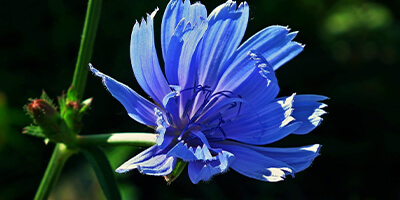
Pheromone SB-74
Pheromone SB-74 is a natural oil product developed by Skin Biology. It was developed during a search for mood enhancers that would improve interpersonal feelings, but it is not an aphrodisiac like jasmine or ylang ylang. If you have an allergy to many fragrances, you can view the allergen sheet here.

Polyquaternium-7
Polyquaterniums are ammonium compounds used in hair care products for their anti-static properties. Polyquaterniums help construct a smooth surface on hair strands to produce more lustrous, silky hair.

Polysorbates
Polysorbates (80 and 20 / Tween 20) are derived from lauric acid, which comes from coconut oil. Polysorbates function as an emulsifiers and also have mild surfactant properties. Polysorbates are considered non-toxic and safe. They have been approved on the FDA's GRAS (Generally Recognized as Safe) list for years.
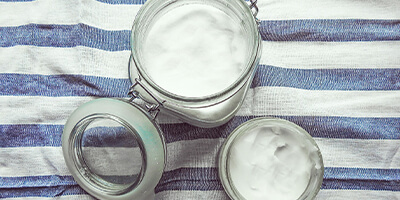
Propylene Glycol
Propylene glycol is a delivery agent that can be derived from glycerin. Propylene glycol helps improve the skin repair functions of our creams. Propylene glycol helps our creams and lotions penetrate the skin and carry copper peptides to the hair follicle, where the remodeling process can begin. Propylene glycol is commonly used in a plethora of personal care products, as well as foods like ice cream.
For more information on Propylene Glycol, please visit Propyleneglycol

Pullulan
Pullulan is a glucan gum produced by black yeast that contains polysaccharides, which makes it a good water-binding agent, thickening agent, and antioxidant. It has some antioxidant properties.

Pumpkin Seed Oil
Pumpkin seed oil is rich in fatty acids, anti-oxidants and trace minerals and has a history of culinary use in Eastern Europe. Recent years have seen growing interest in exploring its us a health supplement.

Pygeum Africanum
Pygeum africanum is derived from the bark of the African cherry tree.
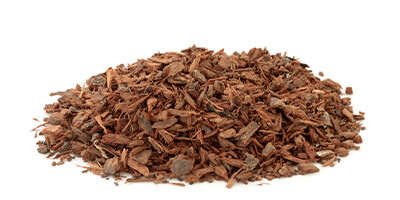
Retinyl Palmitate
Retinyl Palmitate is a combination of retinol (pure vitamin A) and palmitic acid.

Safflower Oil
Safflower seed oil (carthamus tinctorius) is used as an emollient in our products.
Safflower is one of humanity's oldest crops. Chemical analysis of ancient Egyptian textiles dated to the Twelfth dynasty identified dyes made from safflower, and garlands made from safflowers were found in the tomb of the pharaoh Tutankhamun.
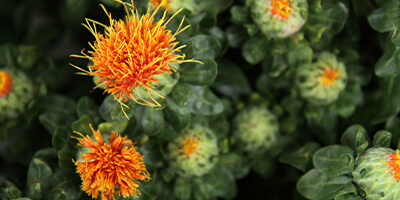
Salicylic Acid
Salicylic acid was first obtained from the bark of the willow tree, Salix. Salicylic acid is a beta hydroxy acid exfoliator and one of the best known skin rejuvenating methods. Salicylic acid helps retain moisture in very dry skin, as well as helping reduce the appearance of fine lines and uneven color of sun-damaged skin.

Sandalwood Oil
Sandalwood (santalum album) has a very long history - over 4,000 years of use - and is mentioned in Sanskrit and Chinese manuscripts. The oil was used in religious ritual, and many deities and temples were carved from its wood. In Buddhism, it is considered to be one of the three incenses integral to Buddhist practice, together with aloes wood and cloves. In the Zoroastrian temples, it burns in sacred fires to soothe the troubles of all humanity. It is used by the Jewish, the Buddhist, the Hindus, as well as almost every other belief system for its vast diversity in attributes. Sandalwood is among the perfumes approved by Islamic tradition, which also include musk, amber, jasmine and myrrh. It is considered one of the most calming incenses, preferred for meditation, and is said to calm the mind, enhance mental clarity, peaceful relaxation, openness, and help promote spiritual practices.

Saw Palmetto
Historical use of saw palmetto can be traced in the Americas to the Mayans who used it as a tonic and to the Seminoles who took the berries as an expectorant.
Saw palmetto was listed in the United States Pharmacopeia from 1906 to 1917 and in the National Formulary from 1926 to 1950.

Soap Bark Extract
The soap bark tree or quillaja saponaria is an evergreen tree native to warm temperate central Chile north to Peru. The inner bark of quillaja saponaria can be reduced to powder and employed as a substitute for soap, since it forms a lather with water, owing to the presence of a glucoside saponin, sometimes distinguished as quillaia saponin. Saponins, have cleansing and water-binding properties for skin. They have also been shown to have antioxidant properties.

Sodium Laureth Sulfate
Sodium Laureth Sulfate (SLES) and sodium c14-16 olefin sulfonate are cleansing and foaming agents naturally derived from coconut oil. Sodium laureth sulfate has a long history of safe use in a variety of cosmetic products. We use sodium laureth sulfate because it is gentle and effective with a documented history of safe use.
For more information on SLS, please visit SLS

Squalane
Squalane is a natural biological oil obtained from olive oil. Squalane makes up about 15% of skin fats in the teenage years but this declines to about 5% after age 50. This is a major factor in the skin becoming rough, dry, and vulnerable to damage.
When rubbed on skin, squalane acts to improve skin protection and moisturization. Squalane is absorbed deeply and quickly into the skin and does not leave an oily film. It is especially useful on dry scaly portions of the body as it helps to maintain your skin's natural moisture level and produces the appearance of softer, smoother skin.

Stearates
Stearic acid is a fatty acid that comes from vegetable oil. Its name comes from the Greek word stéar, which means tallow. The salts and esters of stearic acid are called stearates. Stearic acid is an emollient.
PEG 100 stearate is a mixture of polyethylene glycol and stearic acid. This mixture of fatty acids and fatty alcohols acts as a binding agent and a stabilizer.
Glycerol stearate is a mixture of fats and oils that work as an emollient, lubricant, water-binding and thickening agent.
PEG 3 is a safe, plant-derived pearlizing agent.

Tin Peptides (Stannous Chloride)
Tin-peptides, a complex of ionic tin (2+) and peptides, do not tarnish nails and are very effective in helping smooth and hydrate nails and hands.
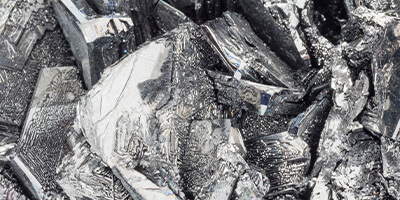
Titanium Dioxide
Mineral used as a sunscreen ingredient in cosmetics, and is considered to have no risk of skin irritation. Titanium dioxide is the safest sunscreen chemical in use.
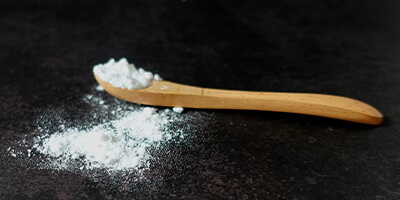
Tocopherols
The best antioxidant you can give your skin, tocopherols, tocotrienols and tocophersolan are different member of the vitamin E family. Both tocopherols and tocotrienols are fat-soluble antioxidants and have been exhaustively studied. Vitamin E can be obtained from many foods, including olive oil, nuts and seabuckthorn berries.
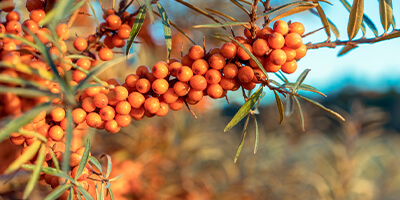
Ubiquinone
Coenzyme Q-10 (Ubiquinone, CoQ10) was first discovered by professor Fred L. Crane and colleagues at the University of Wisconsin-Madison Enzyme Institute in 1957. CoQ10 is a natural part of your body's cell protection function and energy synthesis.
CoQ10 is found in mackerel and herring.

Wild Cherry Bark
The wild cherry tree (prunus serotina) is native to the North American woods. The bark is rough and nearly black on older trunks, but that used is younger, smooth, glossy and reddish brown with white lenticels and underlying greenish-brown cortex.
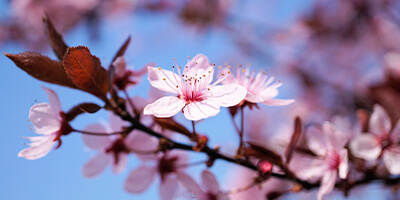
Ylang Ylang Oil
The fame of Ylang Ylang (cananga odorata) started in Bali, Indonesia. The fragrant, pale yellow petals of ylang ylang were traditionally used to decorate and perfume the nuptial bed. The flowers and their oil were used as an aphrodisiac and for calming. Ylang ylang evokes feelings of deep, languid calm that melt away anxiety, tension and stress. The ylang ylang (pronounced lang lang and e-lang e-lang) tree grows in low-lying tropical areas of several countries stretching from India southwards and eastwards to the northern parts of Australia.

